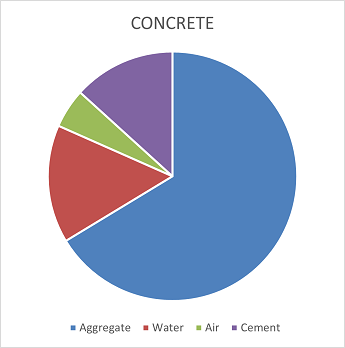
Low Emission Cement
By Jeff Trovato, E.I.T.
Concrete is the most commonly used man-made material. It is employed extensively in the construction industry from the piers under your shed to entire concrete buildings and to sprawling bridges and dams. Moisture and fire resistance make concrete an attractive building material, but it is also used for pipes, sidewalks, and even architectural features like sinks, countertops and wall panels. The history of concrete is long, dating back thousands of years. Modern concrete processes have remained largely unchanged since the early 1800s when Portland cement was invented.
Concrete is composed of four main ingredients:
Aggregate (sand, gravel, rocks): 65%
Water: 15%
Air: 5%
Cement: 15%
Cement is the glue that holds the other ingredients of concrete together. Portland cement is certainly the most widely used and it is composed of limestone and clay minerals that are burned then ground into a fine powder.
The manufacturing of cement generates a significant amount of carbon dioxide (CO2): 8-10% of the total global human-produced emissions! The line I often hear from environmentalists is ‘If cement were a country, it would be the third-largest greenhouse gas emitter after China and US.’ Why? Because Portland cement requires a lot of heat, which is generated by fossil fuels. Other sources of emissions from the cement process are the chemical release of CO2 during heating and emissions associated with mining limestone.
There are currently no convenient alternatives for concrete, but there are cement replacements and cement process improvements that reduce emissions:
- Use less limestone, less heating, more chemicals:
- Solidia, a NJ startup licensing a chemical process developed at Rutgers University, reduces CO2 emissions from cement by 30%.
- LC3 (Limestone Calcined Clay Cement) relies on a chemical reaction between calcined kolinite clay and limestone that results in equal or higher strength cement with less limestone and more clay. LC3 reduces cement emissions by up to 40%
- Improve cement manufacturing processes:
- Carbon capture
- Heating with low carbon fuels
- There are a number of facilities around the world (primarily in Eastern Europe) employing both of these manufacturing improvements, aiming to remove emissions completely within 10 years.
In addition to the methods above, concrete can be used to sequester CO2. That’s right, greenhouse gases that have been captured in other processes can literally be injected into a concrete mix, preventing its release to the atmosphere. Carbon sequestration used in this way can offset emissions produced during cement manufacturing.
The technologies mentioned here can help reduce human-produced CO2. The resistance of the construction industry to adopt new technologies is the main hindrance to low-emission cement solutions. Many technologies are either available to use today or are very close to becoming commercially available. It is hard to blame the construction industry for not adopting these technologies though. A firm’s reputation is vulnerable when they sign off on new building materials. Contractors, engineers, and building suppliers will need to be confident in the data and testing behind low emission concrete products. It is important that engineers, like Team Engineering, take the time to research and confidently specify sustainable building materials to do our part in reducing greenhouse gas emissions.
More Articles From...
| This Category | Architectural Design, Residential Engineering, Structural Design, Structural Engineering |
| This Author | Jeff Trovato, E.I.T. |
